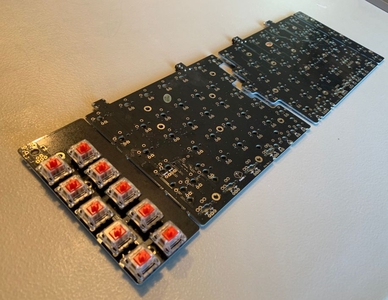COVID-19
Alright, time for some armchair epidemiology. /s
So, the COVID-19 news in the US over the past few weeks has been pretty distressing. There’s (rightfully) been a lot of news coverage of the states that have exploded in case counts: Texas, Arizona, Florida, etc. But, in the background, things are deteriorating in a number of states that had been doing “well” until recently.

As an example, Washington had been seeing decreasing case counts, but starting in late June, the numbers rose again. Now, we’ve had a couple weeks of record new cases.
I’ve stayed pretty conservative in our activities. I still only go out grocery shopping once every other week, and really haven’t taken part in any of the “reopening”. So, there’s not much more I can do on that front.
The biggest question on my mind is “when will this be over”? There are other pressing questions, of course, but I’ve found that having a mental model for the duration of the pandemic has been comforting in light of all the uncertainty. To build a (very, very rough) model of this, I’ve been thinking about a (very rough) heuristic that I find interesting called the Lindy effect, which posits that “future life expectancy of some non-perishable things like a technology or an idea is proportional to its current age”. The canonical example is that, since books have existed for 2000 years, we expect that books, as a technology, will exist for at least another 2000 years. There’s some shaky math behind this, but it’s not meant to be a precise prediction. Applying this to the COVID-19 pandemic, I’ve been in lockdown since March 5, 137 days ago. Doubling that time – 137 days in the future – puts us at December 4th.
Another way of phrasing this heuristic is, “how long would this event last if we were halfway done with it today”. If we were indeed halfway through the pandemic, we’d expect it to last until early December. However, I don’t think that’s a safe assumption: with the way things have been trending over the past 2 months, I could see the tail end of COVID-19 extending well into 2021.
My personal “expectation” of how long the pandemic will last has changed quite a bit in the last few months. Initially, I think we all expected lockdowns to last a few weeks, at most. Then, it became clear we’d be locked down for several months – with the caveat that things would likely improve in the Summer, allowing for a cautiously “open” Fall. Now, who can guess?
This week, my mental model for the pandemic shifted to what others have been expressing for a while: We’re in this for many, many more months, yet. Until something changes (likely requiring some type of large government-driven response), we’re going to be stuck in a period of uncontrolled spread, or a just-barely-controlled plateau.
Granted, there’s some optimism to be found on the horizons in the form of vaccines and improved treatments, but… things are still feeling pretty grim right now.
Sinc Keyboard
As a bit of escapism, I’ve continued to follow my interest in split ergonomic mechanical keyboards. I ordered Keeb.io’s Sinc Split Keyboard PCB a few weeks ago, and it arrived this week, along with a set of key switches.

I also ordered a set of pinhole sockets so that the keyswitches are hot-swappable. I’ve been enjoying linear style switches recently (my current keyboard has Cherry Red switches, but I ordered a set of Gateron Reds for this new board), but I like the idea of being able to swap out the switches without resoldering the whole board.
I’m waiting on my set of keycaps to arrive now… I ordered a set from Signature Plastics, which is a pretty popular manufacturer of custom keycaps. I was surprised to learn that they’re based out of Washington. Homestate pride!
Assorted Links
- I’ve started a list of “2020-isms”. Jason Kottke posted back in May about how COVID-19 is creating new slang and language patterns. Since then, I’ve been slowly curating a list of new or more widely used phrases.
- Raph Levien’s “Seeking truth in a time of misinformation” was a good read about how even well-intentioned journalism about COVID-19 can be misleading. The main takeaway is to focus on an “information diet” of people well-versed in science journalism. Raph also has a COVID-19 Twitter list which is worth reading through periodically.
- This episode of “This Week in Virology” with Anthony Fauci was enjoyable to listen to. Fauci is clearly a quite intelligent scientist, and in this setting you hear him talking with peers using the technical jargon that is often absent from his other public appearances. I didn’t understand it all (I’m not a virologist), but listening to clearly competent people talking about their area of expertise is always interesting.